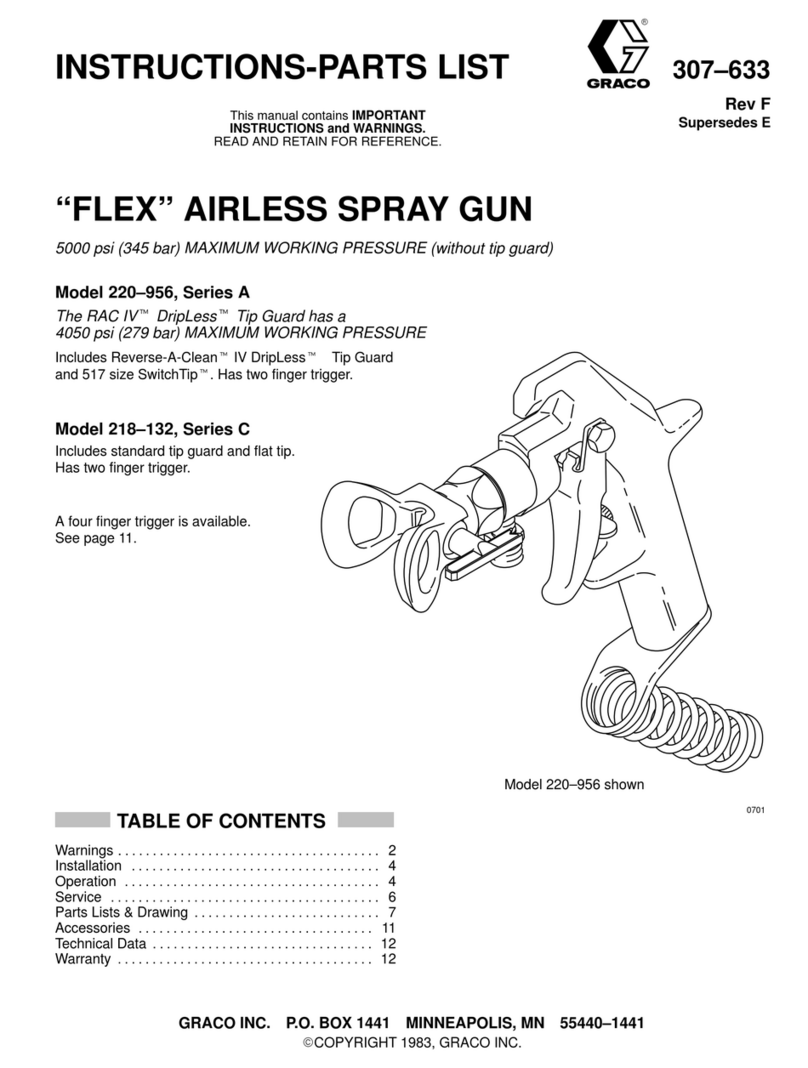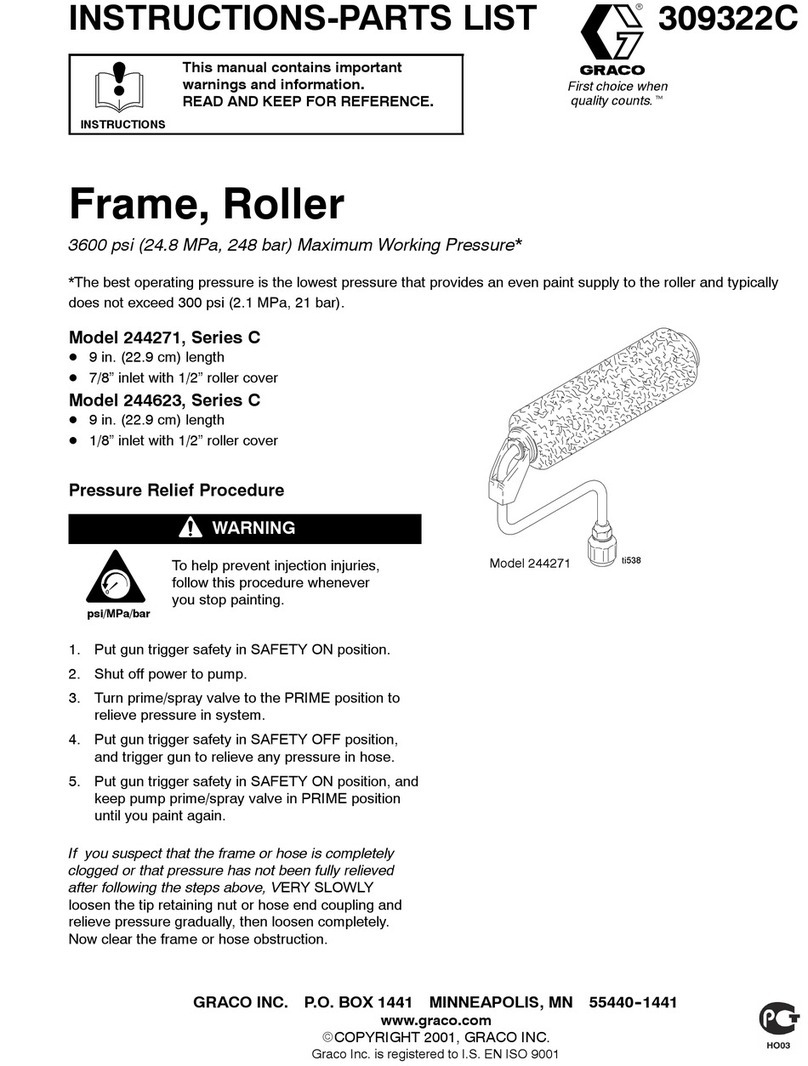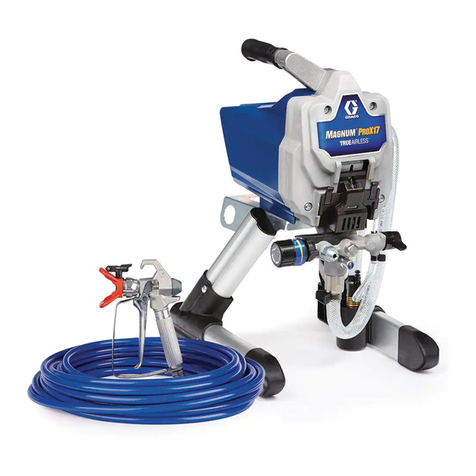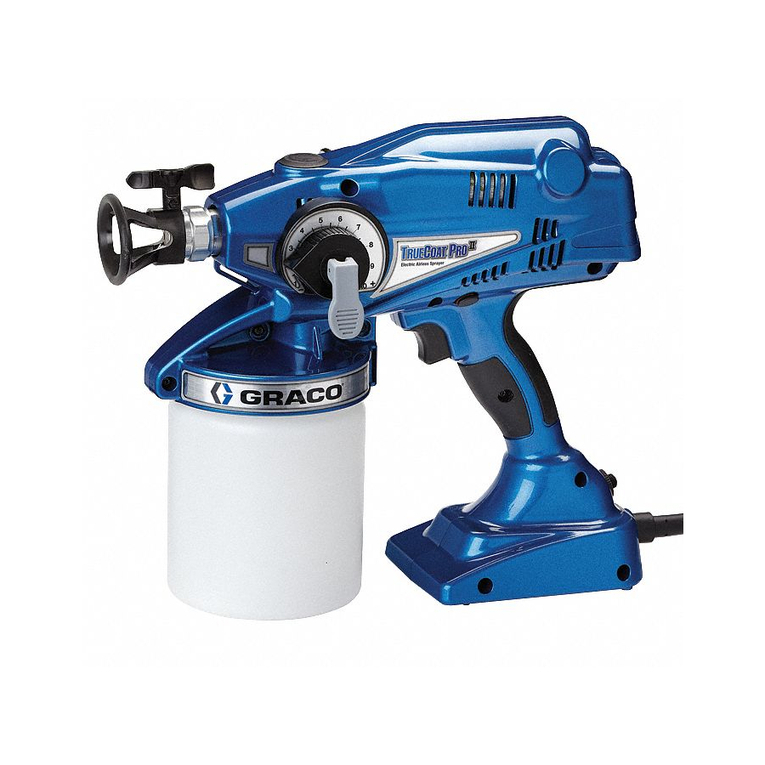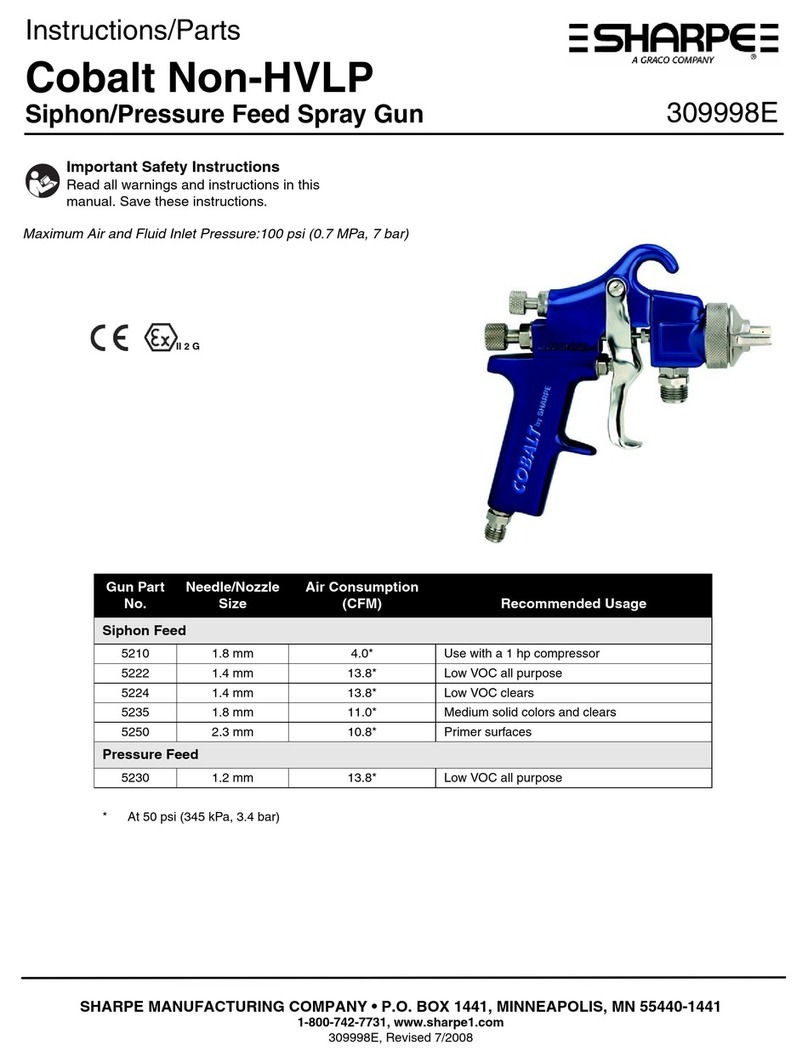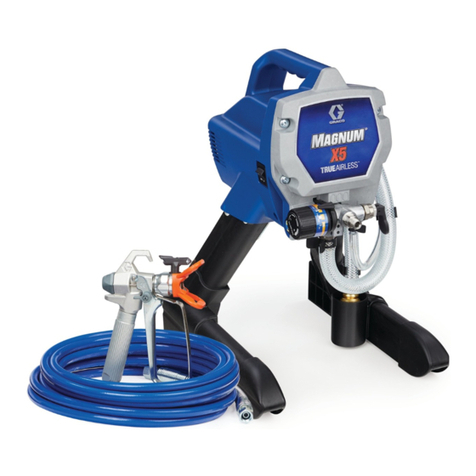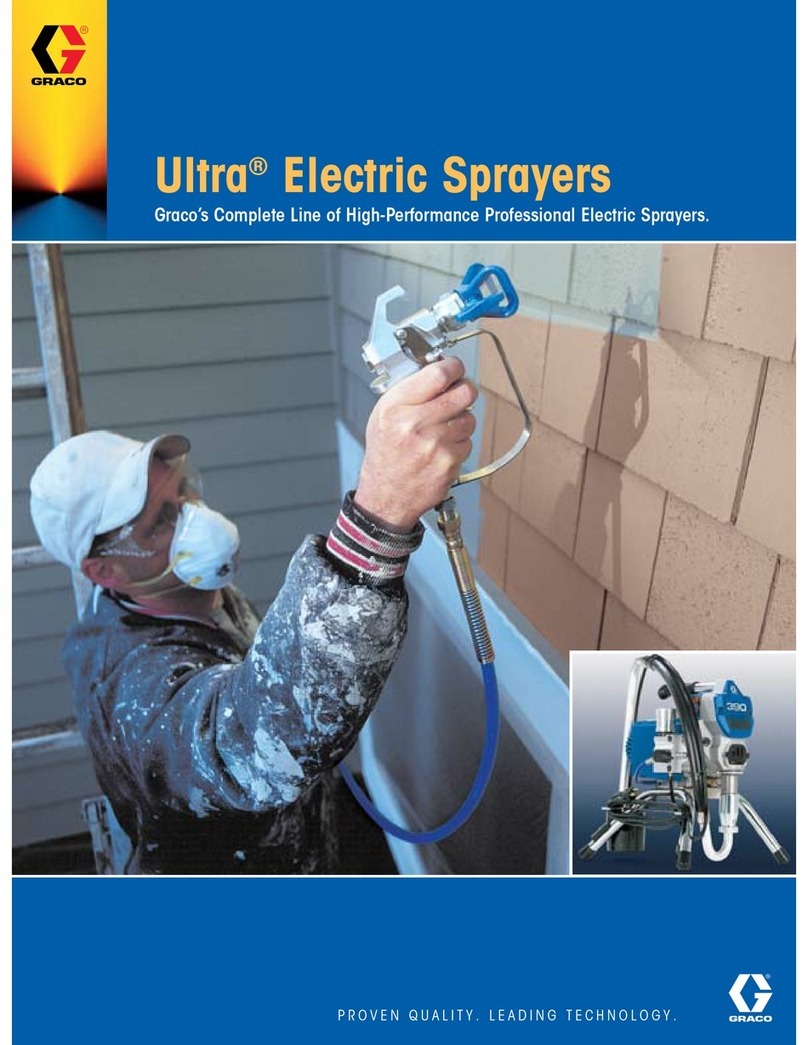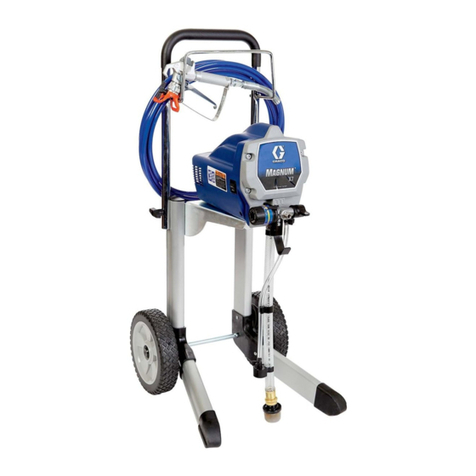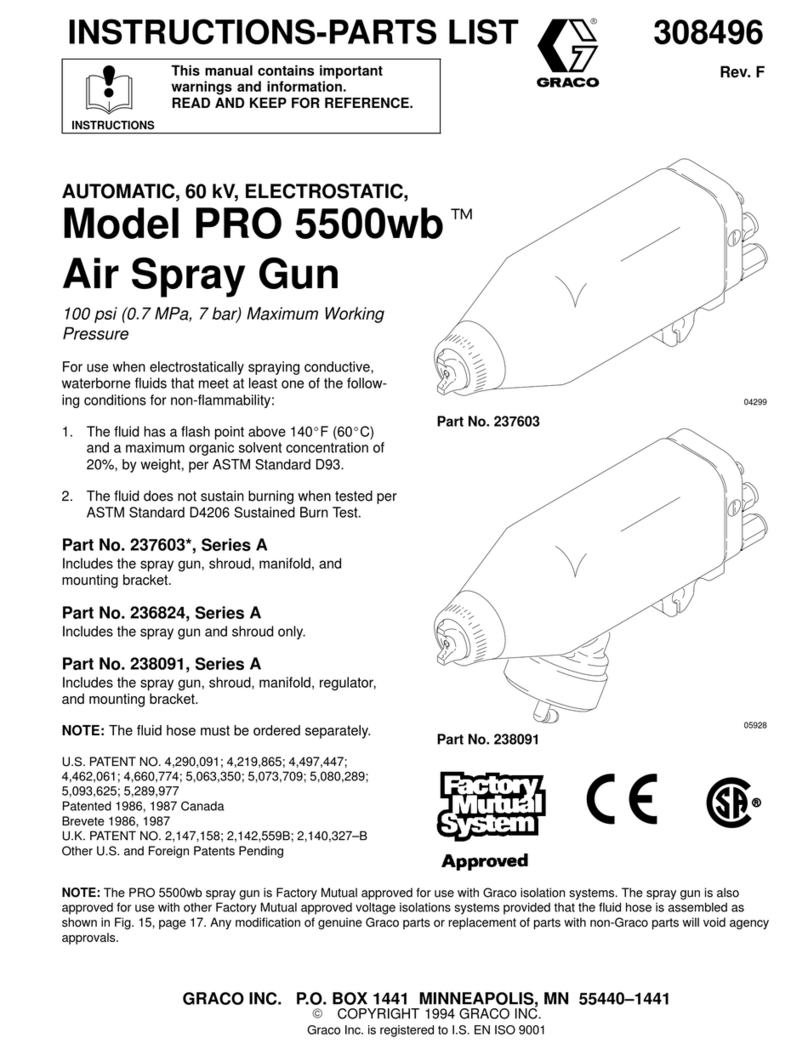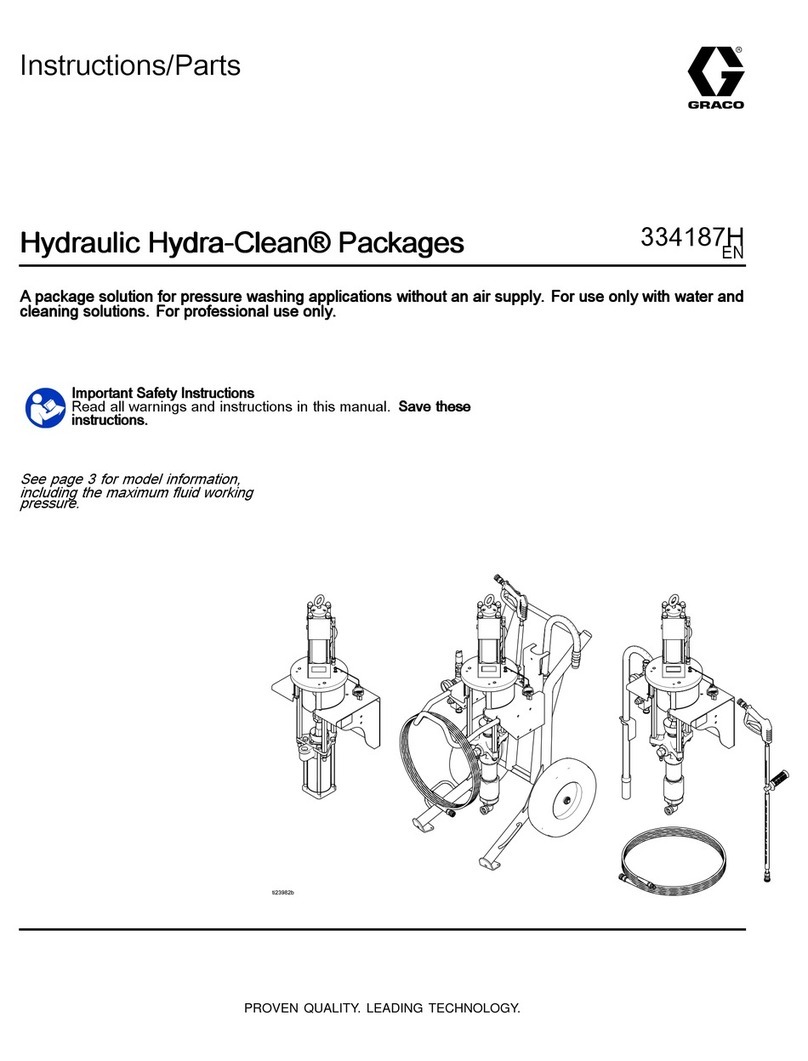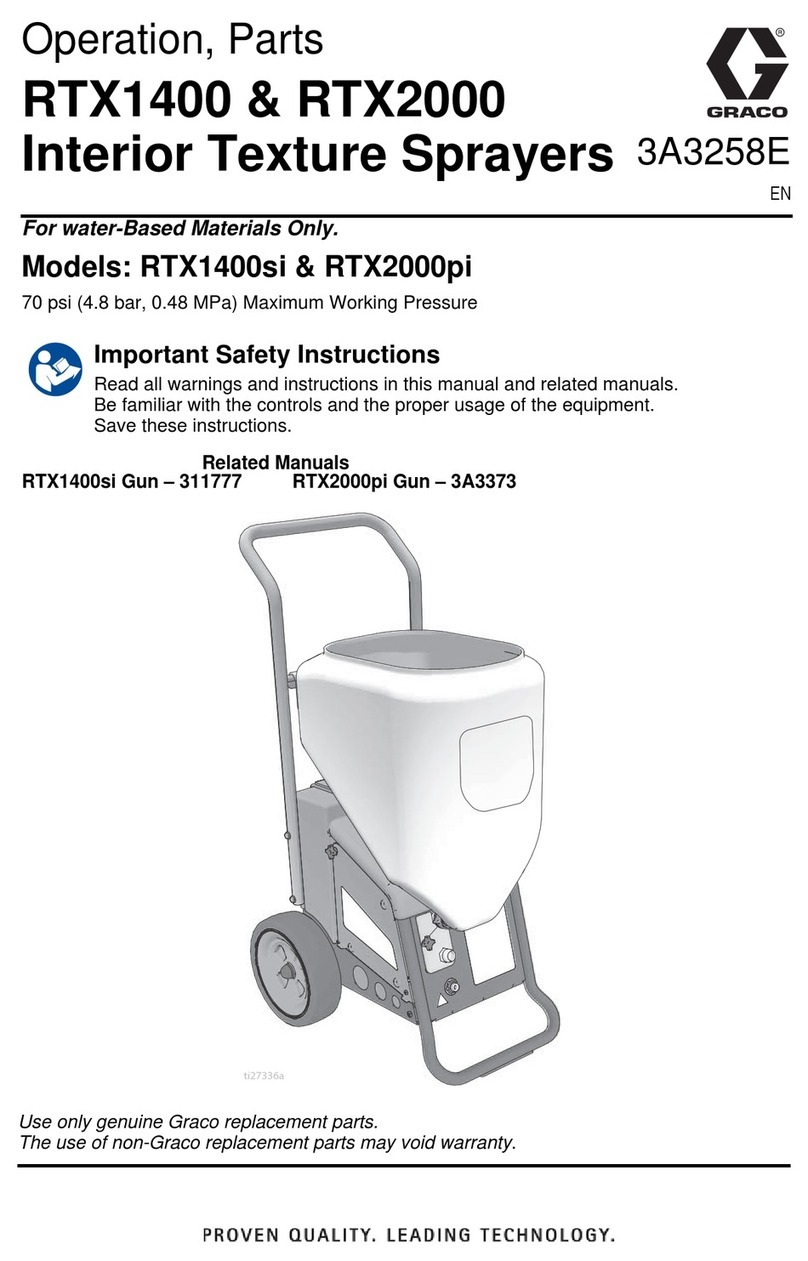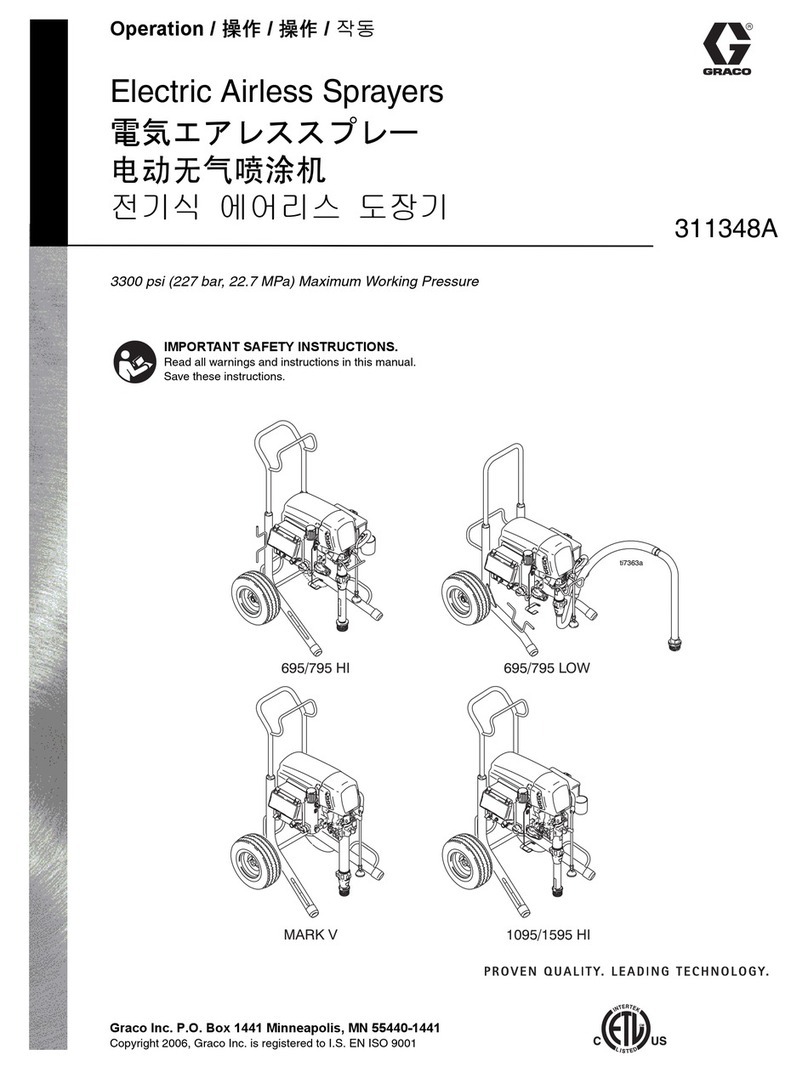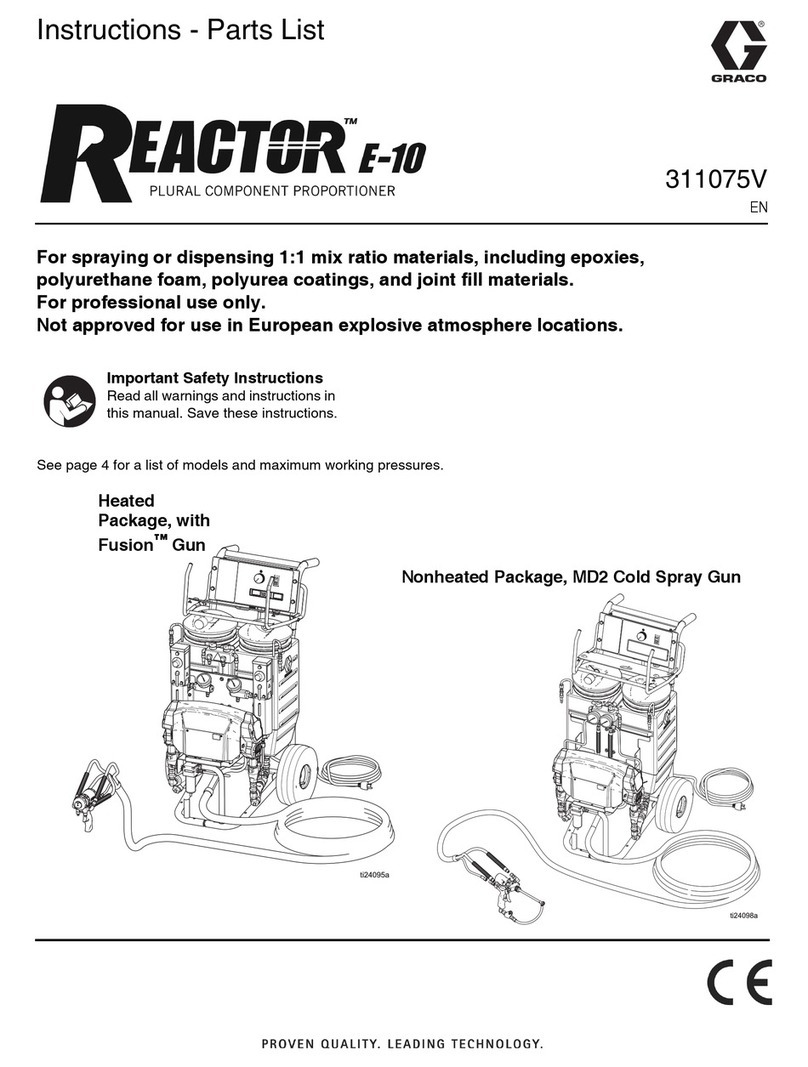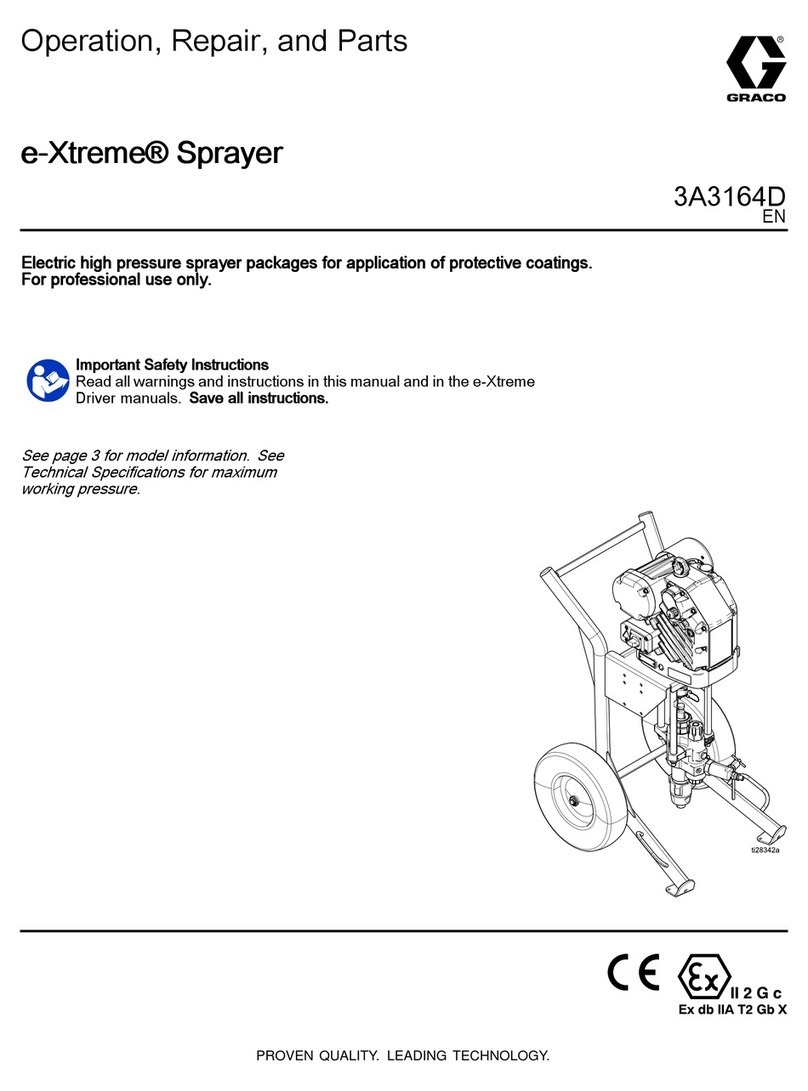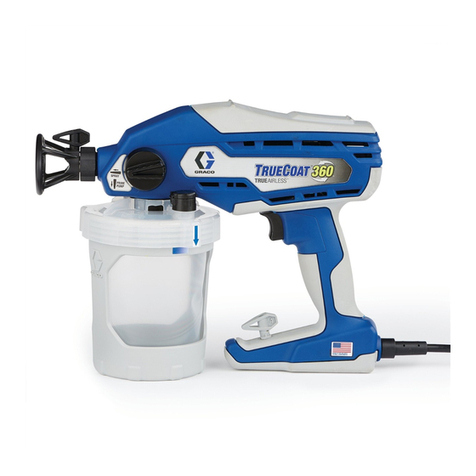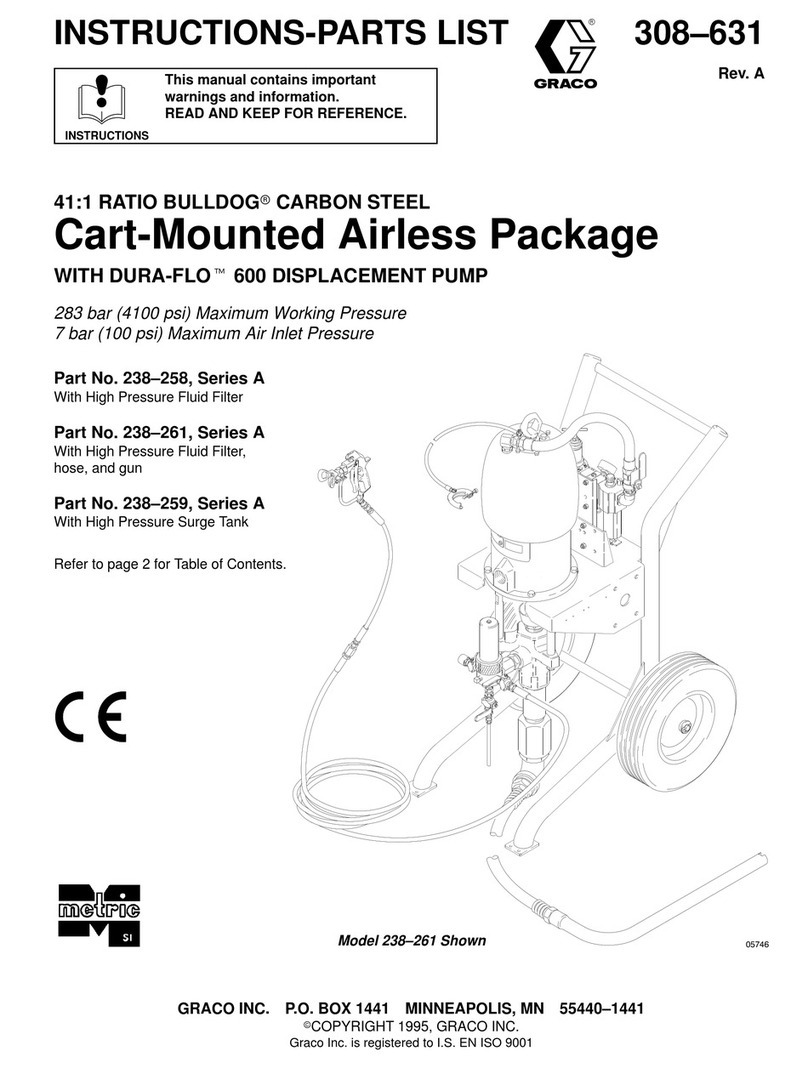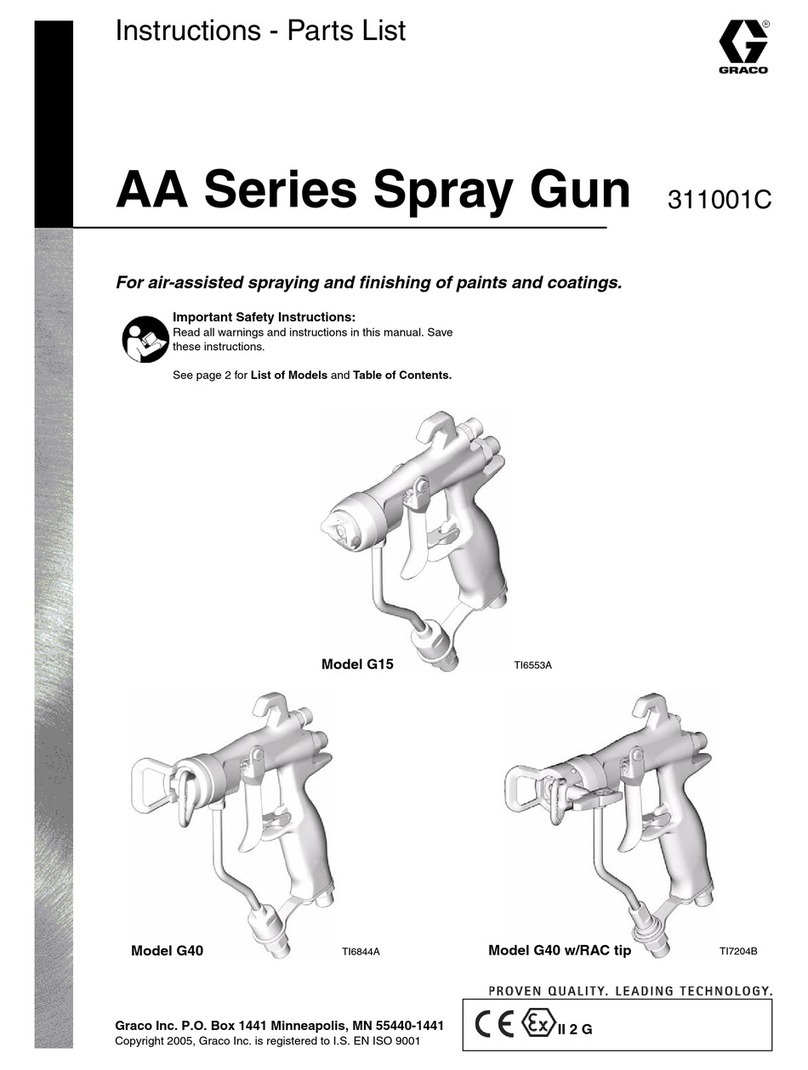
pans.
KEEP CLEAR
of
moving
parts
when starting or Operating
Moving
parls
can
pinch or amputate
your
fingers
or other body
the sprayer. Follow
the
Pressure
Relief
Procedure on
page
4
before Chscltlng or servicing any part of
the
sprayer,
to
prevent
it from starting accidentally.
Any misuse
of
the
spray equipment or accBssories. such
as
General
Safety
overpressurizing, modifying pans,
uslng
incompatible chemi-
to
ruptureand result
in
fluid
injection. splashing in theeyes oron
calsandfluids,orusingwornordamagedparts,cancausethem
the
skin, or other serious bodily injury,
or
fire, explosion or prop
erty
damage.
NEVERal1erormodifyanypartofthisequipment;doingsocould
cause
it
lo
malfunction.
CHECK all spray equipment regularlyand repalror replace worn
or damaged
parts
immediately.
Always wear protective eyewear, gloves. clothing and respirator
as
recommended by
the
fluid
and solvent manufacturer.
System
Pressure
mis
sprayer
can
develop
3000
psi (210
bar)
MRylMUM
WORK-
ING
PRESSURE.
Be
sure
all
spray equipment
and
accB5sories
the
maximum working pressure of any component oraccessory
used are rated
to
withstand the this pressure.
DO
NOT exceed
used
in
the system.
Allchemicalsusedinthesprayermustbechemicailycompatible
Fluid
and
Solvent Compatibility
with the wetted parts shown
in
the TECHNICAL DATA
on
page
43.
Consult your chemical supplier
to
ensure compatibility.
DO~Otusel,l,l-IrichIoroethane,meIhyIenechIoride,oIherhaI~
genatedhydrocarbonsoiventsorfiuidscontainingsuchsolvenls
In
this equipment whW contains aluminum and/or zinc
parts.
Such use could result
in
a serious chemical reacllon, with
the
possibilltydexploslon.
whichcouldcausedealh,seriousbodily
injury and/or Subtantial property damage.
High pressure fluid in the hoses can
be
very dangerous. If the
damage or misuse,
the
high pressure spray emined from it can
hose develops a leak. split or rupture due
to
any kind
of
wear,
causeafluidinjectioninjuryorotherseriousbodiiyinjuryorprop
erty damage.
ALL
FLUID HOSES MUST HAVE STRAIN RELIEFS ON BOTH
ENDSIThestrainreliefshelpprotectthehosefromkinksorbends
at or close
IO
the
coupling which
can
resuit
in
hose rupture.
TIGHTEN
all
fluid connections securely before
each
use.
High
sure spray
to
be
emined from the coupling.
pressure
fluid
can
dislodge a
loose
coupling orallow high pres-
hose for cuts, leaks, abrasion, bulging cover, or damage or
NEVER
use
a damaged hose. Before each
use,
check the entire
replace the hose immediately.
DO
NOTtry
to
recouple
high
pres-
movementofthehosecoupiings.
Ifanyoftheseconditionsexist,
sure hose or mend it with tape or any other device.
A
repaired
hose
cannd
contain the high pressure fluid.
hosastomoveequipment.Keephosesclearofmovingpartsand
HANDLE AND ROUTE HOSES CAREFULLY
Do
not pull on
hotsurlacesofthepumpandgasengine.Dono1usefluidsorsol-
the hose.
DO
NOT
expose
Gram hoses
to
temperatures above
vents which are not compatible with
the
inner tube and,coverof
,180" F
(82'
C)
or below
-40"
F
(-4OO
C).
Hose
Grounding
Continuity
Proper hose grounding continuity
is
essantial
to
maintaining a
grounded spray system. Check the electrical resistance.of your
fluld hoses at least once a week.
if
your
hose
does
not have atag
on it which specifies the maximum electrical resistance, contact
the
hose
supplier or manufacturer for
the
maximum resistance
hose
to
check the resistance. If the resistance exceeds
lhe
rec-
limits. Use
a
resistance meter in the appropriate range for your
ommended limits, replace it immediately.
An
ungrounded or
poorly grounded hose can make your system hazardous. Also
read FIRE
OR
EXPLOSION HAZARD, below.
Static electricity
is
created by the flow of fluid through the pump
and
hose.
If
every
pad
of
the
spray equipment
is
not
properly
grounded,sparkingmayoccur,andthesystemmaybecomehaz-
ardous.Sparkingmayalsooccurwhenplugginginorunplugging
fumes from solvents and the fluid being sprayed,
dust
particles
apowersupplycordorusingagasolineengine.Sparkscanigni1e
doors or outdoors.
and
can
cause afire or explosion
and
serious
and other flammable substances. whether you are spraying
in-
Wily injury and property
damage.
Ifyouexperienceanystaticsparkingwevenaslighishockwhiie
uSingthisequlpment.ST0PSPRAYlNGiMMEDiATELY.Check
the
entire system for proper grounding. Do not
use
the system
again until the problem has been identifled and
corrected.
Grounding
TO reduce the risk
of
static sparking. ground the sprayer and ail
othersprayequlpmentusedoriocatedlnthesprayarea.CHECK
your
local
electrical code for detailed grounding instructionsfor
your area
and
type
of
equipment. BE
SURE
to
ground all of this
spray equipment:
1.
Sprayer:connectagroundwireandclamp(suppiied)toatrue
earlh
ground.
spilled on
a
hot
surface
can
ianite and cause a fire.
NEVER fill the fuel tank
while
the engine
is
running or
hot.
Fuel
ALWAYS pour fuel
in
slowly to-avoid spilling. Also read FIRE
OR
EXPLOSION
HAZARD,
above, and FUELING on Dam
11.
2.
Fluldhoses:useonlygroundedhoseswithamaximumOf500
ft
(150 m) combined hoselength toensure grounding continu-
ity.
See
Hose Grounding continuity, above.
3.
Spraygun:obtaingroundingthroughconnectiontoaproperly
grounded
fluid
hose
and
sprayer.
4.
Object being sprayed: according
to
local
code.
5.
Fluid
supply container: according
to
local
code.
6.
Allsolvent pails used when flushing, according
IO
local
code.
Use
only metal pails. which are conduclive.
Do
not piace the
pail on a non-conductive surface, such as paper or
card-
board, which interrupts the grounding continuity.
7.
To
maintain grounding continuily when
flushing
or relieving
pressure,alwaysholdametalpartofthegunfirmlytolheside
of
a
.grounded metal pail, then trigger the gun.
Flushing
Safety
Reducetheriskoffluidinjectioninjury,staticsparking,orsplash-
lng
by following the
flushing
procedure given on
page
15 of this
4,
and remove the spray lip
bsfore
flushing. Hold a metal
part
of
manual. FoliowthePRESSURE RELlEFPROCEDUREonpage
me
gun firmly
to
the side of a grounded metal
pail
and use the
lowest possible
fluid
prassure during
flushing.
United
States
Government safetv standards have
been
adooted
~ ~ ~~ ~~ ~
under the OccupatlonalSafiiyand Health Act.
mese
slandkrds
-
particularly the General Standards. Part 1910,
and
the
Con-
.
~~
"
~~
".
slruction Standards. Part 1926
-
should
be
consulted.
NEVERoperatetheengineinaclosedbuildingunl&;heengine
exhaust
is
piped
outside.
The
exhaust
contains
cah
monox-
rious illness and even
death
of
inhaled.
ide,apoisonous,odorlessandinvisiblegaswhichcancausese
